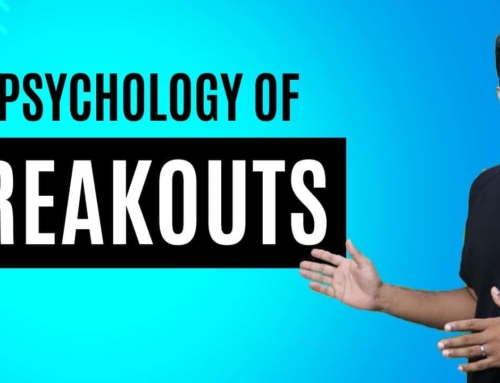Trading Ideas for Working Professionals
So guys, welcome to VRD Nation. This is the channel where we explain complex stock market concepts using practical, real life examples, case studies and live trading. Every topic that we discuss is backed up by solid research and practical experience. If you are new to this channel and you are hearing me for the first time, don’t forget to subscribe now. Let’s get going.
Now, when it comes to trading, I sometimes feel that we are a little bit more focused on active traders and a little less towards the working professionals who are working in their 9 to 5 jobs or 10 to 6 jobs. So I thought that it’s time for us to start focusing on the working professionals as well, because they also need to participate in the stock market.
They also want to make money to invest. We start a series of videos which focus completely on the working professionals so that they can also get some trading ideas to get started. We’ll keep this video short by focusing on only one idea per video, but we will get down to the details of that particular idea so that you guys can easily understand what we are talking about.
The first trading idea and the first advice that I want to give to the working professionals who are getting started in trading is to start with non-directional strategies. Now some of you might have heard about non-directional strategies, but those of you who do not know, let me explain that a little bit.
Later in the video, I will take a real life example of today’s trade to illustrate how a non-directional strategy is applied in real life. So all this will make sense. Let’s just go step by step. Broadly, there are two types of strategies, directional and the other is non-directional.
Directional strategy means that you have to be right about the direction of the stock or the duration of the index for you to be able to make money. Non-directional strategies on the other hand, do not require you to be right about the direction of the market.
Let me give you some examples of directional and non-directional strategies. The most common one is buying and selling shares. For example, let’s say you bought a share of Reliance. The only way that you’re going to make money in that trade is if the stock of Reliance goes higher than your buying price.
So you have to be right about the direction of Reliance else you will not make money. The Other common strategies are buying calls or buying put options. I’m sure a lot of you do this and so you buy call options or put options of a nifty or Bank nifty. If the index or the stock moves in your direction, you will make money.
Similarly, you can also sell call options, sell put options, or you can have a bull call spread. You can have bear put spread. All these are examples of a directional strategy where you have to be right about the direction of the stock or the index. Non-directional strategies on the other hand, do not require you to be right about the direction of the stock.
The stock may go up or the stock may go down, but if you apply the strategy properly, you can still end up making money. Few common non-directional strategies are straddle, strangle, some level based strategies like bull put spread, or a bear call spread. So these are all level based strategies where you can make money even without knowing which direction the stock or the index will eventually move.
Now, some of you might be wondering why exactly are these non-directional strategies better than the directional strategies? Well, there are 4 issues with directional strategies. Number one is of course you have to be right about the direction of the stock or the index. So if you bought a call option of Reliance. Reliance has to move up, otherwise you will lose money. So you need to have a deeper understanding of the market or the stock to be able to have that kind of a view. The second reason is that let’s say you bought a call option, or you bought a put option, which I know that a lot of you do.
And a lot of people who buy these options, they end up losing money because not only do you have to be right about your view, whether the stock will go up or go down, you also have to be fast. So for example, let’s say you bought a call option of TCS and you’re expecting TCS to go up. Let’s say TCS did go up, but it went up in the third week of holding that option.
Now what happens is that from the first week till the third week, the option has already lost a lot of premium. So in spite of the stock moving in your direction, you still do not make money. A lot of these directions strategies require you to be right and for that view to work out very quickly. So basically there is a time pressure on you for the trade to workout.
Third thing I think is a very important thing is that you guys are working professionals. You are working in your full-time job. You are also dedicating your time to your family, your friends and you have to take time for a lot of other things. For you to be able to deploy directional strategies, it requires higher effort.
It requires higher level of analysis, and that sometimes can be a challenge. Last but not the least the probability of success. Generally speaking, and based on my own experience of a non-directional strategy is higher than our directional strategy. Now this is something which of course will depend upon the level of experience and the knowledge and stuff like that.
But still generally speaking non-directional strategies, they have a higher success rate than the directional strategies. Now I know that by this point of time, a lot of you understood the general concept behind the non-directional strategies, but may not have a real sense of what exactly is being talked about here and how does a non-directional strategy actually work?
So what I will do is, as we always do is I will take a real life example from today’s trade and show you how a non-directional strategy is applied in real life today. When I came to the market and knew that I did not have a lot of time to trade, but I did have a view about the levels of bank nifty. So, let me go here.
So this morning when I looked at bank nifty, so I did not know where that bank nifty will go down, or it will go up. But based on my analysis, I had one view that given the market context that we are in and some of the other data points that I looked at, it is very improbable for bank nifty to go beyond 33000.
That’s it. So my view is that this level will not be broken on the upside, but below this level bank nifty, they can go down. It may go up, it may go down, whatever it wants to do, it can do. So this is how a non-directional strategy works, where you’re saying that I don’t know what exactly will happen in the next, let’s say one day or two days or three days, or let’s say a week or two weeks.
But I do know that these levels are unlikely to be broken either on the upside or on the downside. So what I did was, this morning, somewhere around 9:20, I sold a call option of back nifty at 118 rupees. With the view that bank nifty will not go about 33,000. So now this is an expiry day strategy, and I’ve explained this experiment strategy in a separate video.
And we have made a bunch of videos explaining how the expiry day strategy is applied in real life. So if you’re not watching those videos, definitely go in and watch that. But today, because of my time commitments, I did not have a time to do the regular, expiry date trades. So I basically sold this option and went away.
I sold this option at 118 rupees, and I came back somewhere around, 2:38, which is almost towards closing of the market. And I made some money. This is a perfect example of a non-directional strategy, where you take a trade and all you have to do is basically sit and wait for the trade to work in your favor.
And of course, if things start to go wrong, you have to get out of the position, which is the exit strategy, but this would be a quick example of a non-directional strategy. So guys, this is it. I just wanted to have a very quick, short and sweet video where I can just give one piece of advice to all the working professionals so that they can start focusing in the right direction so that they don’t lose money first of all, and they don’t feel frustrated because they’re trying something and it’s not really working out. So you should start with something which has a higher probability of success so that you can get the confidence that you need to keep going. So I really hope that you learn something new from this particular video.
Howdy!
If you’re here for the first time, let’s get introduced.
VRD Nation is India’s premier stock market training institute and we (Team VRD Nation) are passionate about teaching each and every aspect of investing and trading.
If you’re here for the first time, don’t forget to check out “Free Training” section where we have tons of free videos and articles to kick start your stock market journey.
Also, we got two awesome YouTube channels where you can continue the learning process.
Must-Read Articles
Trading Ideas for Working Professionals
So guys, welcome to VRD Nation. This is the channel where we explain complex stock market concepts using practical, real life examples, case studies and live trading. Every topic that we discuss is backed up by solid research and practical experience. If you are new to this channel and you are hearing me for the first time, don’t forget to subscribe now. Let’s get going.
Now, when it comes to trading, I sometimes feel that we are a little bit more focused on active traders and a little less towards the working professionals who are working in their 9 to 5 jobs or 10 to 6 jobs. So I thought that it’s time for us to start focusing on the working professionals as well, because they also need to participate in the stock market.
They also want to make money to invest. We start a series of videos which focus completely on the working professionals so that they can also get some trading ideas to get started. We’ll keep this video short by focusing on only one idea per video, but we will get down to the details of that particular idea so that you guys can easily understand what we are talking about.
The first trading idea and the first advice that I want to give to the working professionals who are getting started in trading is to start with non-directional strategies. Now some of you might have heard about non-directional strategies, but those of you who do not know, let me explain that a little bit.
Later in the video, I will take a real life example of today’s trade to illustrate how a non-directional strategy is applied in real life. So all this will make sense. Let’s just go step by step. Broadly, there are two types of strategies, directional and the other is non-directional.
Directional strategy means that you have to be right about the direction of the stock or the duration of the index for you to be able to make money. Non-directional strategies on the other hand, do not require you to be right about the direction of the market.
Let me give you some examples of directional and non-directional strategies. The most common one is buying and selling shares. For example, let’s say you bought a share of Reliance. The only way that you’re going to make money in that trade is if the stock of Reliance goes higher than your buying price.
So you have to be right about the direction of Reliance else you will not make money. The Other common strategies are buying calls or buying put options. I’m sure a lot of you do this and so you buy call options or put options of a nifty or Bank nifty. If the index or the stock moves in your direction, you will make money.
Similarly, you can also sell call options, sell put options, or you can have a bull call spread. You can have bear put spread. All these are examples of a directional strategy where you have to be right about the direction of the stock or the index. Non-directional strategies on the other hand, do not require you to be right about the direction of the stock.
The stock may go up or the stock may go down, but if you apply the strategy properly, you can still end up making money. Few common non-directional strategies are straddle, strangle, some level based strategies like bull put spread, or a bear call spread. So these are all level based strategies where you can make money even without knowing which direction the stock or the index will eventually move.
Now, some of you might be wondering why exactly are these non-directional strategies better than the directional strategies? Well, there are 4 issues with directional strategies. Number one is of course you have to be right about the direction of the stock or the index. So if you bought a call option of Reliance. Reliance has to move up, otherwise you will lose money. So you need to have a deeper understanding of the market or the stock to be able to have that kind of a view. The second reason is that let’s say you bought a call option, or you bought a put option, which I know that a lot of you do.
And a lot of people who buy these options, they end up losing money because not only do you have to be right about your view, whether the stock will go up or go down, you also have to be fast. So for example, let’s say you bought a call option of TCS and you’re expecting TCS to go up. Let’s say TCS did go up, but it went up in the third week of holding that option.
Now what happens is that from the first week till the third week, the option has already lost a lot of premium. So in spite of the stock moving in your direction, you still do not make money. A lot of these directions strategies require you to be right and for that view to work out very quickly. So basically there is a time pressure on you for the trade to workout.
Third thing I think is a very important thing is that you guys are working professionals. You are working in your full-time job. You are also dedicating your time to your family, your friends and you have to take time for a lot of other things. For you to be able to deploy directional strategies, it requires higher effort.
It requires higher level of analysis, and that sometimes can be a challenge. Last but not the least the probability of success. Generally speaking, and based on my own experience of a non-directional strategy is higher than our directional strategy. Now this is something which of course will depend upon the level of experience and the knowledge and stuff like that.
But still generally speaking non-directional strategies, they have a higher success rate than the directional strategies. Now I know that by this point of time, a lot of you understood the general concept behind the non-directional strategies, but may not have a real sense of what exactly is being talked about here and how does a non-directional strategy actually work?
So what I will do is, as we always do is I will take a real life example from today’s trade and show you how a non-directional strategy is applied in real life today. When I came to the market and knew that I did not have a lot of time to trade, but I did have a view about the levels of bank nifty. So, let me go here.
So this morning when I looked at bank nifty, so I did not know where that bank nifty will go down, or it will go up. But based on my analysis, I had one view that given the market context that we are in and some of the other data points that I looked at, it is very improbable for bank nifty to go beyond 33000.
That’s it. So my view is that this level will not be broken on the upside, but below this level bank nifty, they can go down. It may go up, it may go down, whatever it wants to do, it can do. So this is how a non-directional strategy works, where you’re saying that I don’t know what exactly will happen in the next, let’s say one day or two days or three days, or let’s say a week or two weeks.
But I do know that these levels are unlikely to be broken either on the upside or on the downside. So what I did was, this morning, somewhere around 9:20, I sold a call option of back nifty at 118 rupees. With the view that bank nifty will not go about 33,000. So now this is an expiry day strategy, and I’ve explained this experiment strategy in a separate video.
And we have made a bunch of videos explaining how the expiry day strategy is applied in real life. So if you’re not watching those videos, definitely go in and watch that. But today, because of my time commitments, I did not have a time to do the regular, expiry date trades. So I basically sold this option and went away.
I sold this option at 118 rupees, and I came back somewhere around, 2:38, which is almost towards closing of the market. And I made some money. This is a perfect example of a non-directional strategy, where you take a trade and all you have to do is basically sit and wait for the trade to work in your favor.
And of course, if things start to go wrong, you have to get out of the position, which is the exit strategy, but this would be a quick example of a non-directional strategy. So guys, this is it. I just wanted to have a very quick, short and sweet video where I can just give one piece of advice to all the working professionals so that they can start focusing in the right direction so that they don’t lose money first of all, and they don’t feel frustrated because they’re trying something and it’s not really working out. So you should start with something which has a higher probability of success so that you can get the confidence that you need to keep going. So I really hope that you learn something new from this particular video.















![What is Virtual Contract Note [Zerodha]](https://www.vrdnation.com/wp-content/uploads/2023/10/maxresdefault-virtual-note-500x383.jpg)



Leave A Comment